Curious Bannerstones Used By Prehistoric Native Americans For Unknown Purpose
Jan Bartek - AncientPages.com - About 8,000 years ago, ancient Americans suddenly started producing unusual objects known today as bannerstones. The purpose of these curious artifacts has eluded scholars who are still in the dark trying to find out why the objects were valuable to Archaic people.
Bannerstones have been unearthed in many places, mainly in the Eastern United States.
These baffling ancient objects made from different stone materials vary in size and shape, and some of them are truly unique.
Image credit National Museum of the American Indian - Compilation by AncientPages.com
When knowledge of bannerstones reached the scientific community, scientists assumed these were some ancient tools. However, the fact many unused bannerstones have been found in graves diminished the strength of this theory.
At the Indian Knoll site in Kentucky, archaeologists discovered many unused bannerstones in graves. Few bannerstones found at this place “show signs of use. They are carved of exotic imported stones with an exceptional artistry that exploits the natural colors, patterns, and striations of the stones to afford maximum visual satisfaction." 1
Could these bannerstones have been burial gifts?
Most bannerstones, not all, have a butterfly shape, and they are characterized by a symmetrically carved hole in the center. These ancient American artifacts often have different designs and colors, suggesting they were of spiritual and ceremonial significance.
The name bannerstone “was coined by early twentieth century scholars who thought they must have been mounted on shafts and used as emblems or ceremonial weapons. But just why they were made only during the so-called Archaic period, which ended around 3,000 years ago, has been debated by archaeologists for more than a hundred years.
Some have taken the position that they were not strictly ceremonial and were used as weights that imparted force and accuracy to spear throwers or atlats.” 2
“Atlats are essentially throwing sticks with a handle on one end and a hook on the other that can hold a spear. By drawing the spear thrower back and then hurling it forward, a hunter can use the atlatl as a lever to launch a spear, sending it farther and with more power than of launched only by hand.” 2 This led scholars to think “the bannerstones were meant to somehow increase the efficiency of such spear throwers.” 2
Thera are also researchers who say the bannerstones’ “craftsmanship and materials suggest that they also served as emblems of prestige and status conferred upon hunters coming of age, and as supernatural talismans for increasing the spear-throwers efficacy. They may also have served as emblems of clans or other social units.” 3
Based on years of studies of bannerstones, researchers discovered bannerstones are highly individualized, meaning these objects must have had a special meaning to the people who fashioned them.
Bannerstone produced around 2,000 B.C. The form of the present example is known as a double-notched butterfly. Credit: Public Domain
“The earliest bannerstones were made by the Shell Mound Archaic people around 6,000 B.C.. By around 3,800 B.C., people in the Savannah River Valley had begun fashion them.” 2
The tradition spread among the prehistoric Native Americans until around 1,500 B.C. bannerstones suddenly vanished from archaeological records.
It is unknown why ancient Americans stopped producing bannerstones. Still, scientists noted, “complex stone pipes appear around this time, and that finely made, drilled stone figures depicting birds may have been mounted on atlatls, perhaps occupying the cultural niche once filled by bannerstones.
The skills and aesthetic appreciation Archaic people once lavished on these unique objects changed focus, and bannerstones tradition vanished.” 2
Updated on November 20, 2023
Written by Jan Bartek - AncientPages.com Staff Writer
Copyright © AncientPages.com All rights reserved. This material may not be published, broadcast, rewritten or redistributed in whole or part without the express written permission of AncientPages.com
Expand for references- Berlo, Janet C. and Ruth B. Phillips - Native North American Art.
- Powell, Eric A. "Set In Stone." Archaeology70, no. 4 (2017): 44-48.
- Hero, Hawk, and Open Hand: American Indian Art of the Ancient Midwest and South
- Cooper, Steven R. "An Unusual Bannerstone Feature." Central States Archaeological Journal55, no. 2 (2008): 71
More From Ancient Pages
-
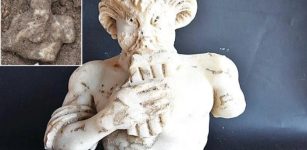 1,700-Year-Old Statue OF Greek God Pan Unearthed In Istanbul
Archaeology | Jun 9, 2023
1,700-Year-Old Statue OF Greek God Pan Unearthed In Istanbul
Archaeology | Jun 9, 2023 -
 Why Is A Biscuit Named After Giuseppe Garibaldi – Italy’s Military Leader And Hero?
Ancient History Facts | Feb 19, 2017
Why Is A Biscuit Named After Giuseppe Garibaldi – Italy’s Military Leader And Hero?
Ancient History Facts | Feb 19, 2017 -
 3,000 Years Ago Human Activity Destroyed Vegetation And Irreparably Damaged The Timna Valley Environment
Archaeology | Sep 23, 2022
3,000 Years Ago Human Activity Destroyed Vegetation And Irreparably Damaged The Timna Valley Environment
Archaeology | Sep 23, 2022 -
 John Dee’s Magical Mirror Used To Contact Spirits Can Be Traced To The Aztecs
Archaeology | Oct 7, 2021
John Dee’s Magical Mirror Used To Contact Spirits Can Be Traced To The Aztecs
Archaeology | Oct 7, 2021 -
 Death Of Kvasir And How Famous Mead Of Poetry Was Created, Stolen And Finally Recovered By Odin
Featured Stories | Apr 14, 2018
Death Of Kvasir And How Famous Mead Of Poetry Was Created, Stolen And Finally Recovered By Odin
Featured Stories | Apr 14, 2018 -
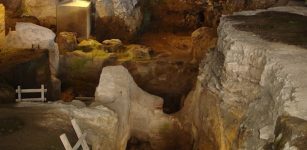 Ancient Secrets Of The Theopetra Cave: World’s Oldest Man-Made Structure And Home To Humans 130,000 Years Ago
Civilizations | May 12, 2016
Ancient Secrets Of The Theopetra Cave: World’s Oldest Man-Made Structure And Home To Humans 130,000 Years Ago
Civilizations | May 12, 2016 -
 Ancient Societies Ruled By Ruthless Dictators – Collapsed
Civilizations | Oct 18, 2020
Ancient Societies Ruled By Ruthless Dictators – Collapsed
Civilizations | Oct 18, 2020 -
 On This Day In History: The Battle of Salamis – Sep 22, 480 BC
News | Sep 22, 2015
On This Day In History: The Battle of Salamis – Sep 22, 480 BC
News | Sep 22, 2015 -
 Anundshög Burial Mound: One Of Sweden’s Richest And Largest Sacred Ancient Sites
Featured Stories | Aug 29, 2018
Anundshög Burial Mound: One Of Sweden’s Richest And Largest Sacred Ancient Sites
Featured Stories | Aug 29, 2018 -
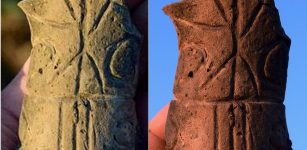 7,000-Year-Old Unique Lipnik Idol Statuette Unearthed In Moravian Gate Valley, Czech Republic
Archaeology | Dec 14, 2015
7,000-Year-Old Unique Lipnik Idol Statuette Unearthed In Moravian Gate Valley, Czech Republic
Archaeology | Dec 14, 2015 -
 Ale Conner: Unpleasant And Dangerous Profession In Medieval England
Ancient History Facts | Oct 19, 2017
Ale Conner: Unpleasant And Dangerous Profession In Medieval England
Ancient History Facts | Oct 19, 2017 -
 Legendary Brahan Seer Of The Clan Mackenzie (Coinneach) – The Scottish Nostradamus
Featured Stories | Jan 21, 2025
Legendary Brahan Seer Of The Clan Mackenzie (Coinneach) – The Scottish Nostradamus
Featured Stories | Jan 21, 2025 -
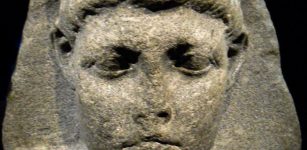 ‘Little Caesar’: Forgotten ‘King Of Kings’ Who Died Very Young
Featured Stories | May 11, 2020
‘Little Caesar’: Forgotten ‘King Of Kings’ Who Died Very Young
Featured Stories | May 11, 2020 -
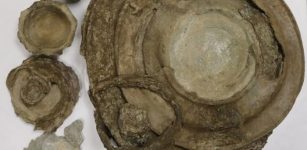 Rare 2,000-Year-Old Roman Hoard Discovered In Suffolk
Archaeology | Jul 5, 2023
Rare 2,000-Year-Old Roman Hoard Discovered In Suffolk
Archaeology | Jul 5, 2023 -
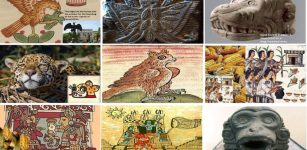 10 Aztec Symbols Explained
Ancient Symbols | Mar 20, 2018
10 Aztec Symbols Explained
Ancient Symbols | Mar 20, 2018 -
 On This Day In History: Sir Thomas Brisbane, Astronomer, Soldier And Governor Was Born – On July 23, 1773
On This Day In History | Jul 23, 2016
On This Day In History: Sir Thomas Brisbane, Astronomer, Soldier And Governor Was Born – On July 23, 1773
On This Day In History | Jul 23, 2016 -
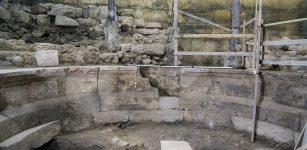 Roman Theater Unearthed After 1,700 Years Near Western Wall In Jerusalem
Archaeology | Oct 19, 2017
Roman Theater Unearthed After 1,700 Years Near Western Wall In Jerusalem
Archaeology | Oct 19, 2017 -
 Amazing Ancient Roman Marble Floor Found In The Underwater City Of Baiae, Italy
Archaeology | Aug 5, 2024
Amazing Ancient Roman Marble Floor Found In The Underwater City Of Baiae, Italy
Archaeology | Aug 5, 2024 -
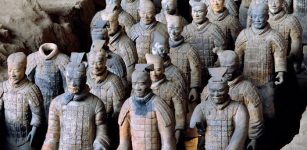 On This Day In History: Terracotta Army Buried With Emperor Qin Shi Huang Discovered – On Mar 29, 1974
News | Mar 29, 2017
On This Day In History: Terracotta Army Buried With Emperor Qin Shi Huang Discovered – On Mar 29, 1974
News | Mar 29, 2017 -
 Mysterious Relics Can Retrieve Leonardo da Vinci’s DNA And Provide New Information About The Great Renaissance Man
Archaeology | Apr 22, 2017
Mysterious Relics Can Retrieve Leonardo da Vinci’s DNA And Provide New Information About The Great Renaissance Man
Archaeology | Apr 22, 2017


